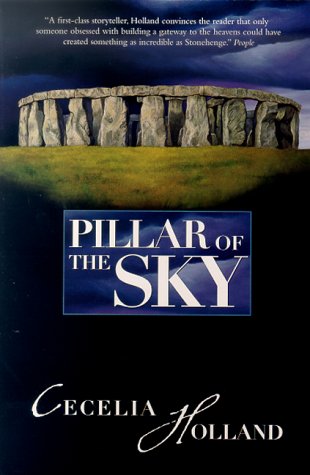The Pillar of the Sky
Cecelia Holland is a highly versatile writer whose novels have settings ranging from science fiction and the American West to the Middle Ages to this, her earliest-set novel, which tells of the building of Stonehenge. It builds on earlier tales set in prehistoric times such as Jean M Auel’s Earth’s Children and William Golding’s The Inheritors, while in itself surely influencing Bernard Cornwell’s recent novel Stonehenge. Like Auel’s prehistoric world, Holland shows us a time where people weren’t sexist and everybody had a valid part to play in a society which has headwomen as well as headmen. The People of Ladon’s Village look not only towards the brutish male power of Ladon but also towards the mystic Karella who is closer to their deity, who “was not a vessel for the mysterious power of the male”. Karella adopts Ladon’s outcast relative Moloquin and encourages him to become a mighty shaman whose task it is to cause Stonehenge to be built.
As well as a tale of conflicts within the People, it is also a tale of the awesome task of building such an enduring monument and the driving forces behind it. Nobody knows what life was like in those days; Holland’s portrayal of it seems to owe quite a lot to feminist wishful thinking, but it is a well-realized depiction and drew me in from the first page. This is a large subject, full of fascinating details and conjectures about the way people lived, their religious convictions and how they viewed the unexplained wonders of their world. It says much of Holland’s storytelling power that although a lot of her ideas about prehistoric life made me shake my head in disbelief, the more I read the less I cared and was swept up in the maelstrom of the tale. This is, after all, what a novel is about, so dive in and enjoy. It ought also to appeal to fantasy fans as it contains many of the features found in the best fantasies – world-building that defies disbelief.










